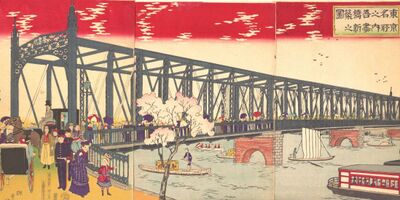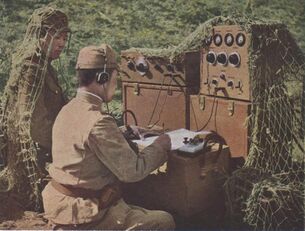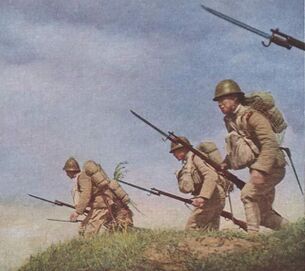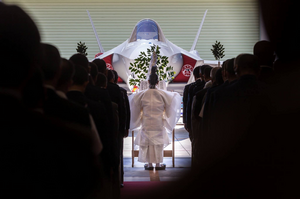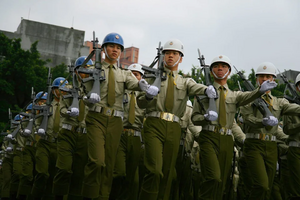User:Really/sandbox1
Collective People's Union Συλλογική Λαϊκή Ένωση (Syllogikí Laïkí Énosi) | |
|---|---|
|
Flag | |
| Motto: 一Όλοι οι Άνθρωποι Δεμένοι Μαζί! All people bound together! | |
| Anthem: Η Διεθνής (I Diethnís) The International | |
| Party Crest | |
| Syndicate Map of the Collective People's Union Syndicate Map of the Collective People's Union | |
| Capital and largest city | Obintum |
| Official languages | Énositypo (Union Standard) |
| Recognised national languages | Chóran Dyatóran Eschóran |
| Ethnic groups | Chóran, Dyatóran , Eschóran |
| Demonym(s) | Unionian (citizen) |
| Government | Council-based Syndicated Dominant Party State |
| Nikoloz "Niko" Rodoulis | |
| Stamatios Xenelis | |
| Legislature | General Congress of Ktonismos |
| Establishment | |
• Chóran Genesis | 1000 BCE |
• City States | 600 BCE |
• Oraclate | 300 BCE |
• Eruption at the Mount | 50 BCE |
• Age of Kingdoms | 100 CE |
• Chóran Empire | 1430 CE |
• Civil Strife | 1900 CE |
• Collective People's Union | 1919 CE |
| Population | |
• 2020 estimate | |
• 2022 census | |
| GDP (PPP) | 2022 estimate estimate |
• Per capita | 52,128 $ |
| GDP (nominal) | 2022 estimate estimate |
• Total | 10.5 Trillion $ |
| Gini (2022 estimate) | 0.378 low |
| HDI (2022 estimate) | 0.925 very high |
| Currency | Drachma (CPUD) |
| Date format | dd.mm.yyyy |
| Driving side | left |
| ISO 3166 code | CPU |
| Internet TLD | .cpu |
Chóra, officially the Collective People's Union (Énositypo: Συλλογική Λαϊκή Ένωση) is a transcontinental country situated at the juncture of South Eastern Maris and Western Agleia. It is divided mainly between the Chóran and Eschóran Peninsulas, and borders the Mesogeian Sea to the South and the Mavre Sea to the North. Obintum is the country's capital and second-largest city, while Gyálinos is the largest city and economic financial center. Chóra is a multi-ethnic nation comprised primarily of Chóran, Ları and Rоратаn peoples.
One of the world's earliest permanently settled regions, present-day Chóra is home to many pre-historic cites such as Palió Vounó and was inhabited by ancient civilizations including the Chitites, Chatites, Eschóran Peoples, Oraclans, and others. Following the conquests of Máchi the Great most of the ancient Chóran and Eschóran regions were culturally Ailenized, and this continued through the Anthaos Era and the eventual rise of the Andronikos Dynasty. The Sali Liaks began migrating to the Eschóran Peninsula in the 11th century, ultimately seeing cultural integration into Early Chóran Religious Practices through the Missionary-Saint Savvina. The Liak Kingdom of Rye ruled Eschóra, and the Andronikos Dynasty ruled Chóra until the Great Eastern Invasion when both polities would disintegrate into dozens of Sali Liak and Chóran Principalities. Beginning in the late 13th century, the Mitridis Dynasty united the principalities and conquered the Dyatórans, while aileniziation of Eschóra further progressed during the Mitridis Period. Mitridis Expansion continued under Aimilios II, and during the reign of Erasmia the Spectacular, the Mitridis Empire became a global power
From the late 18th century onwards, the empire's power declined with a gradual loss of territories. Imperator Aimilios VII started a period of modernization in the early 19th century, leading the Mitridis Empire into the First World War as one of the Imperial Powers in 1893. During the war the Mitridis Government committed genociodes against the Nisiótes and Bayt Peoples. Despite initial surges in mitridis-nationalistic sentiment, no major war goals would be achieved and the tide of war would quickly turn against the Mitridis Government, with the last major portion of war support lost with the 1895 Ascension Crisis of Manos II. The Mitridis Empire sued for peace in desperate circumstances, with the majority of the nation's Agleian territory partitioned. The Assassination of Imperator Manos II and the Young Chóran Revolution of 1899 restricted the authority of the Imperator and restored the Chóran Parliament after a 15-year suspension, ushering the empire into a brief multi-party period. The Three Triumvirs took control with the 1905 coup d'état, acting as the Regency Council of the young Imperator Kalliopi III. The Triumvirate would collapse after the death of Triumvir Omiros Koskiades under mysterious circumstances in 1909, leading to a brief civil war with Imperial-Claimant Manolidell I opposing the reign of Kalliopi III. The war would end with Manolidell's defeat, resulting in a brief centralization of power under Triumvir, now Dictator Tomas Ioannakis. This would quickly lead to the rise of the Decembrist League, who allied with the Young Chórans would lead the 2nd Young Chóran Revolution in 1917, originally set out to achieve the same goals of re-democratization and the enacting of Imperial-Claimant Manolidell's liberal ideas, would quickly be overtaken by anti-monarchist sentiments, leading to a overthrow and assassination of Tomas Ioannakis and Kalliopi III. A Brief Chóran-Eschóran People's Republic would see formal dissolution of the Mitridis Empire, despite continued resistance of the White Chóran Movement. Ktonas Demetriou, leader of the Ypérochist Faction in the Decembrist League would had acted as the de-facto military leader of the People's Republic would oust opposition in a coup d'état eventually taking control and declaring the "Collective People's Union" in 1919.
Chóra is a regional power with a geopolitical significant strategic location
Etymology
The name "Chóra" is a hydronymn referring to the Chóran Straits.
History
Ilbo-Genesis
First Kingdoms
Machinist Era
Revolution and Red Ilbon
Reconstruction and Cesylle
Return to the World Stage
Years of the Carp
Politics
Governance
Administrative divisions
Largest cities
Foreign relations
Military
Military and Defense Market
Police Forces
Economy
Industry and Services
Corporate Conglomerates
Agriculture
Mining
Commerce and finance
Media
Infrastructure
Transportation
Shinkansen
Telecommunications
Energy
Tourism
Public policy
Geography
Climate
Wildlife
Demographics
Ethnicity
Religion
Religion in Ilbon
Education
Healthcare


